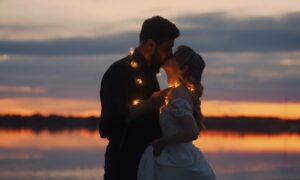If you’re involved with editing surveillance footage, you’ve likely realized it’s not as simple as trimming a clip or adding a timestamp. The legal and ethical terrain can be tricky to navigate.
Getting it wrong can lead to serious consequences, especially if the footage ends up as evidence in a courtroom. Let’s break it down and see how you can approach editing with care while staying on the right side of the law.
Table of Contents
ToggleMessing With the Footage & the Legal Risks

Editing surveillance footage improperly—or worse, tampering with it—can land you in hot water.
Tampering is considered obstruction of justice and can bring heavy fines or even jail time. Altering or destroying footage to hide evidence is not just a bad look; it’s illegal.
Additionally, 18 U.S. Code § 1519 specifically addresses the destruction, alteration, or falsification of records in federal investigations and bankruptcy.
This provision makes it a crime to knowingly alter, destroy, or conceal any record, document, or tangible object with the intent to impede or obstruct the investigation or proper administration of any matter within the jurisdiction of any department or agency of the United States.
Key Points to Keep in Mind
- Courts lean on the Federal Rules of Evidence, which demand authenticity and reliability.
- If the footage appears altered in a way that changes its meaning or context, it might not only be tossed out but could also open the door to legal action against you or your organization.
Why Surveillance Footage Matters in Court
Surveillance footage often carries weight in legal cases. Whether it’s catching a crime in progress or supporting someone’s alibi, the stakes are high. For a video to hold up in court, it must meet certain standards.
The Key Requirements
- Relevance: The footage must directly tie into the case. A blurry shot of someone walking down a hallway may not cut it unless it has real significance.
- Authenticity: The footage must be genuine, not tampered with or manipulated to change the context.
- Chain of Custody: Courts demand a clear record of who handled the footage and when, ensuring no funny business happened along the way.
Editing a video can be tricky because any changes can raise eyebrows about its authenticity. Courts are naturally skeptical, knowing how easy it is to alter digital evidence.
This is why preserving the original, unedited version is an absolute must. If the original isn’t available, the edited footage could be dismissed outright.
Editing Footage Without Crossing Legal Lines

There are legitimate reasons to edit surveillance footage. Maybe you need to zoom in on a critical detail or clean up poor lighting to make something clearer.
However, it’s important to follow best practices to ensure you don’t accidentally compromise the integrity of the video. Employing trusted programs like Movavi can help you edit surveillance videos without compromising their evidentiary value.
Best Practices to Keep Your Edits Above Board
- Always Keep the Original: The unedited version should be stored safely and never altered.
- Log Every Edit: Write down every change you make, why you made it, and when. Transparency goes a long way in keeping you out of trouble.
- Use Trusted Software: Stick to reputable tools designed for forensic or professional video editing.
- Ask an Expert: Forensic video analysts can help ensure your edits don’t affect the footage’s reliability.
When you stick to these guidelines, you’re not just protecting the footage—you’re also protecting yourself and your organization from unnecessary headaches.
Don’t Forget About Privacy

Editing surveillance footage isn’t just about legal rules; it also involves respecting people’s privacy. Laws like the Video Privacy Protection Act (VPPA) set the stage for how personal information, even in video form, should be handled.
While the VPPA originally targeted video rental records, the core idea—respecting privacy—is still highly relevant.
Key Privacy Considerations
- Avoid exposing personal details like faces or identifiable features unless absolutely necessary.
- Blur out uninvolved individuals when possible.
- Always check whether local laws or regulations impose additional privacy protections.
What About State Laws?
Federal rules are just part of the picture. Each state may have its own specific regulations on surveillance.
Some states, for instance, dictate how long you have to keep footage or where CCTV cameras can legally be installed.
For example, Florida has enacted legislation imposing criminal penalties for covert videotaping in private spaces such as bathrooms, though this protection does not extend to public areas like beaches, as per UpCounsel.
Questions to Ask About Your State’s Rules
- How long do I need to retain footage?
- Are there specific areas (like bathrooms or locker rooms) where cameras are forbidden?
- Do I need to inform people they’re being recorded?
Being aware of state-specific nuances ensures you’re not blindsided by legal issues down the line.
The Ethical Side of Editing

Let’s be real—editing footage isn’t just about avoiding lawsuits. It’s also about doing the right thing.
There’s a fine line between enhancing clarity and altering reality. Misleading edits can damage reputations, erode trust, and in some cases, ruin lives.
The Bottom Line on Ethics
- Edits should clarify, not distort.
- Avoid removing context that could change the meaning of what’s shown.
- Always act with honesty and integrity—your reputation depends on it.
Final Thoughts
Editing surveillance footage is a balancing act between clarity, legality, and ethics. By safeguarding the original version, documenting every change, and respecting privacy, you can handle footage responsibly without risking legal or ethical pitfalls.
It’s all about ensuring that the final product can stand up to scrutiny while staying true to what the footage is meant to represent: the truth.
References
- law.cornell.edu – 18 U.S. Code § 1512 – Tampering with a witness, victim, or an informant
- upcounsel.com – Video Surveillance Laws by State: Everything You Need to Know








